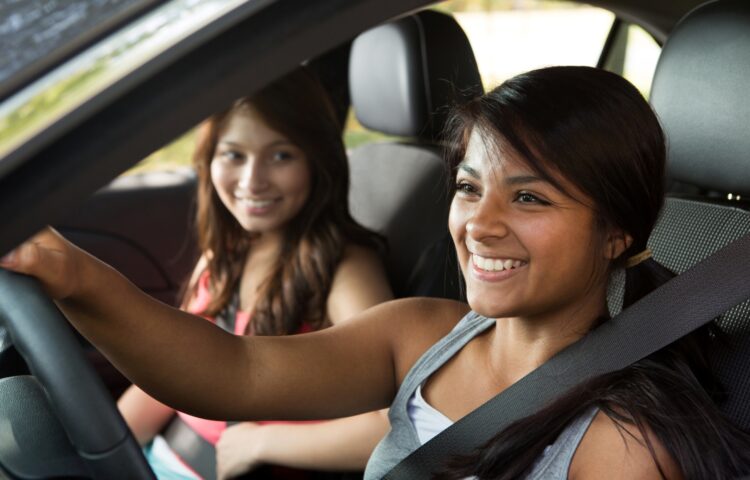Distracted driving is one of the leading causes of car accidents in teenagers and young drivers. According to NHTSA, each day in the United States, approximately nine people are killed and more than 1,000 injured in crashes that are reported to involve a distracted driver. In 2017, 3,166 people were killed in a crash involving a distracted driver.
These statistics are frightening. Parents should talk to the young drivers in their family about distracted driving and methods to avoid tragedy.
Taking Your Mind Off the Road
Most of us are guilty of distracted driving at one time or another. It happens maybe more than we’d like to admit — we drive while letting another activity take our attention away from focusing on the road.
When your brain is thinking about anything other than what is happening on the road, it makes it difficult to react during a potential crash. This happens even more often with teen drivers, who simply have much less experience behind the wheel. When your teenagers aren’t paying attention to the road, their chances of a car crash are higher, and it affects passengers both inside and outside of the car.
Even though distracted driving is commonly discussed in relation to mobile phone use, according to the AAA Foundation Report, the top reason for distracted driving in teens isn’t due to phone use; it’s actually drivers being distracted by other passengers.
Teen drivers (under the age of 20) have the highest proportion of fatal crashes related to distracted driving. The top reason, at 15 percent, of all teen distracted driver accidents was due to passengers. The second highest reason was texting, at 12 percent.
Causes of Distracted Driving
Distracted driving comes in several different forms:
- Visual: taking your eyes off the road, like texting, using a navigation system or applying makeup
- Manual: taking your hands off the wheel, for eating or adjusting the radio
- Cognitive: taking your mind off of driving, like talking on the phone or to other passengers
The most common causes of distracted driving are the following:
- Using a mobile device: texting, using social
media, talking or FaceTiming, accessing the internet or taking selfies - Watching/streaming videos or using entertainment
devices - Grooming, doing hair or makeup
- Eating
- Rowdy passengers, partying or dancing in the car
- Driving while upset, emotional or angry
- Reading a book, newspaper, directions,
instructions or email
Texting and Driving: A Dangerous Habit
Even though it’s not the top cause, text messaging is one of the most common forms of distracted driving, especially in teenagers. In 2017, 42% of high school students who drove in the past 30 days reported sending a text or email while driving. In the same year, 9% of all teen motor vehicle crash deaths involved distracted driving.
The temptation to quickly look down at your phone and read or answer a text while driving is ever-present, especially for young people. Looking at a mobile device to either send or receive a text takes your eyes off the road for about five seconds. If you’re traveling at a speed of 55 miles per hour, that’s enough time to drive the length of a football field.
Texting or looking at a mobile device is also related to other dangerous practices for teen drivers. Students who reported frequent texting while driving were also:
- Less likely to wear a seatbelt
- More likely to ride with a driver who had been drinking
- More likely to drink and drive
How to Prevent Distracted Driving
Parents should always be a good example to teen drivers. You can’t expect your children to not drive distracted if you don’t.
Even as early as middle school, start talking to your children about distracted driving and its dangers. Talk to them about distraction, its forms, and all of the responsibilities that come with driving.
Once it’s time for your child to begin driving, have everyone in the family sign a pledge to commit to distraction-free driving, which can be included in your tech contract with your kids. Make sure your children understand all of the laws of the road, and especially that a violation of distracted-driving laws could mean a delayed or suspended license.
Talk to your children about what they can to drive safely. Use these tips as a guide:
- Finish dressing and personal grooming at home.
- Decide on the route and check traffic conditions ahead of time.
- Store loose items that could roll around so you’re not tempted to reach for them. If something does roll, don’t reach for it until parked and the car is off.
- Make adjustments to things like GPS, seats, mirrors, climate controls and sound systems before pulling away.
- Avoid temptation. Put electronic distractions aside and stow before leaving. Don’t use mobile devices while driving, regardless if they’re hands-free. Never text, email, play video games or use the internet while driving.
- If possible, eat meals or snacks before or after a trip, not while driving. On the road, avoid messy foods that can be difficult to manage.
- Drive with full focus and don’t let anything take away your attention.
- Actively scan the road, use mirrors and watch out for pedestrians and cyclists.
- If you have passengers, ask for their help so you can focus safely on driving.
- If something distracts you and needs your attention, don’t attempt it while driving. Pull off the road and stop your car in a safe place.



